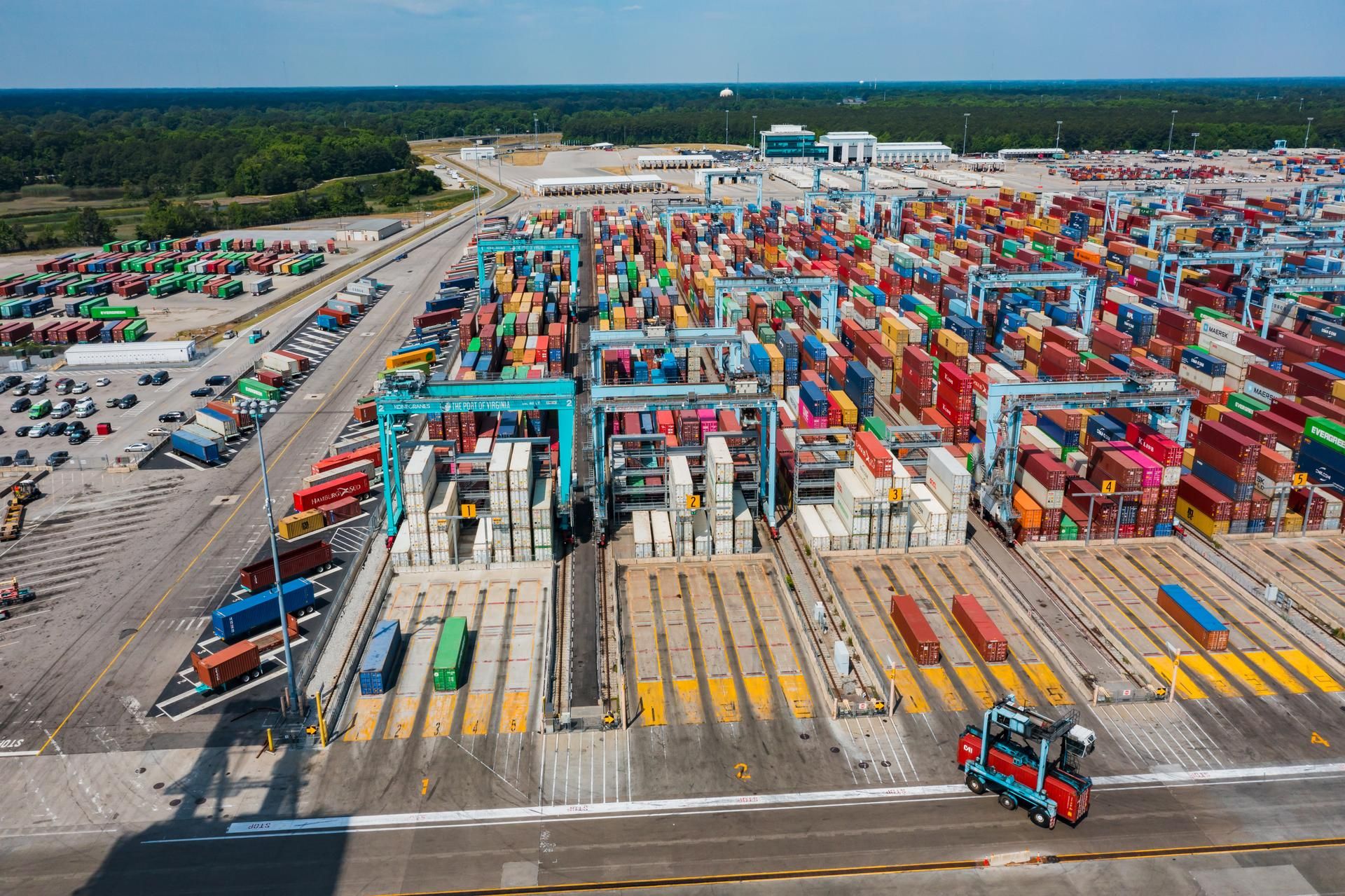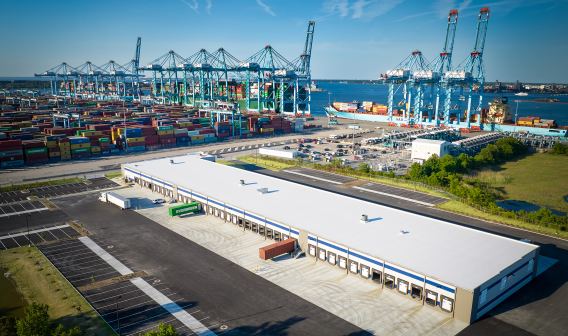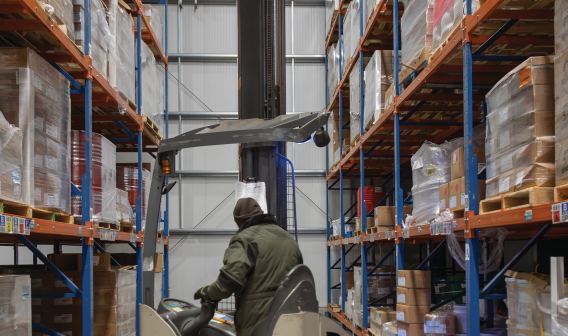Integration and Innovation Fuel the Future of E-Commerce
E-commerce became the lifeblood of retailers and business-to-business (B2B) suppliers in 2020, yet the innovation that grew out of this need has disrupted industry norms forever. Research from the Retail Industry Leaders Association (RILA) and McKinsey & Co. projects that e-commerce will reach 25% to 40% of sales across categories even after the COVID-19 pandemic abates. Two-thirds of respondents surveyed for the groups’ 2021 “Retail Speaks” report cited the growth of omnichannel and digital shopping as the most significant trends affecting the industry, as well as the greatest challenge.
Part of this challenge lies in the speed at which these trends, once considered to be on a multiyear trajectory, have accelerated. As the RILA/McKinsey report notes, e-commerce volumes grew as much in the first quarter of 2020 as in the previous ten years.
Retailers and supply chain infrastructure both must adapt — not only to meet the strong influx of e-commerce demand, but to grow in a future where omnichannel experiences are the norm and same-day delivery is an expectation.
Integrating Sales Channels
Retailers have been rebuilding the shopping experience since Amazon first came on the scene, but it’s the B2B e-commerce sector that has really exploded. In 2019, global B2B e-commerce spending reached $12.2 trillion, six times the size of the business-to-customer (B2C) market, reports Digital Commerce 360 in its “Key Findings from the 2021 U.S. B2B Ecommerce Market Report.”
However, the pandemic made a rich end-to-end e-commerce experience critical. As U.S. B2B sales fell 2.6% in 2020 compared to the prior year, B2B e-commerce sales grew by 10% or more in some sectors. As the report notes, the volume of B2B sales in an industry came down to how efficiently B2B buyers and sellers were able to pivot to online solutions during the COVID-19 pandemic.
“B2B buyers are mandating their suppliers to integrate with their e-procurement system to provide punchout catalog capability from their commerce system and sales order automation, such as electronic purchase order and invoice routing, so the entire procure-to-pay process is online, streamlined, and automated. Automation has really been emphasized over this past year with COVID,” said Kari Cress, vice president, marketing and partner success for Albemarle County-based PunchOut2Go, a platform-as-a-service company that specializes in connecting commerce business platforms with e-procurement spend management and enterprise resource planning applications.
[Small businesses] might have a simple e-commerce system, but they don't have the ability to integrate and do business the way their customers want to. B2B buyers want the simplicity of e-commerce and the efficiency of automated procurement.
The company’s name comes from punchout catalogs and websites, a method for corporate purchasing that allows users within a company to shop a supplier’s website from within their own purchasing procurement system. They’re one of many novel solutions emerging to meet buyers’ unique needs.
In B2B procurement — where multiple decision makers may be involved, and there’s an expectation for negotiated pricing and personalized terms — the online purchasing experience hasn’t always been as smooth as with B2C transactions. Some smaller businesses, Cress said, “might have a simple e-commerce system, but they don’t have the ability to integrate and do business the way their customers want to. B2B buyers want the simplicity of e-commerce and the efficiency of automated procurement.”
PunchOut2Go is working to change that by reducing the friction between B2B buyers and sellers in the exchange of procurement and commerce data while maintaining strong back-end management support. But a smooth ordering experience is just the start of an e-commerce transaction, and the rest of the supply chain is also adjusting to the COVID reality.
Redefining Fulfillment Centers
The explosion of digital orders has translated to new expectations around how goods reach their destination. “There’s a shift now, as many companies are moving from a highly concentrated West Coast port strategy to one that’s more balanced and bringing merchandise over to the East Coast,” said Tom Capozzi, chief sales and marketing officer at Virginia International Terminals, LLC, a subsidiary of the Virginia Port Authority (VPA). From January through August 2021, VPA saw a 31% increase in business that it was largely able to handle, due in part to recent major expansions at VPA facilities that have increased the port network’s total processing capability up to 4 million twenty-foot equivalent units (TEU) each year.
“While a lot of other major North American gateways are really choking on the volume of business that they’re receiving, we’re handling it very well, and that’s really starting to be recognized in the marketplace,” Capozzi said.
However, it’s no longer enough to simply add new capacity. E-commerce businesses striving to achieve same-day delivery are looking for infrastructure that helps them move goods more efficiently. This is where data becomes critical.
To this end, innovators like The Port of Virginia are providing greater visibility into shipment status to speed container throughput. Through electronic data interchange and application programming interface channels, the port provides data interchange options and visibility to importers to track, trace, and obtain status on their containers, as well as metrics such as truck turn times and rail dwell.
Once containers arrive onsite, VPA has adopted new strategies for distributing containers to speed the transition of cargo from ship to destination.
The Port of Virginia is using shipment data to optimize its workflows and speed the movement of cargo from ship to destination.
“Our semi-automated operation allows us to effectively distribute containers throughout different stacks so when their trucks come in to pick them up, they’re not all concentrated in one stack. It allows for better flow,” Capozzi said.
This data-based insight will become even more important as VPA adapts its footprint to match new delivery strategies.
Amazon Explores Cross-Docking Possibilities
Like many companies, Amazon is taking an approach that balances a range of distribution strategies. The company, which is in the process of building and staffing its HQ2 in Arlington, has more than 10 fulfillment and sortation centers and delivery stations across the state, with construction for additional robotics fulfillment centers underway in Henrico County and Suffolk. The company has also constructed a cross-docking processing center in Chesapeake to open in late 2021 and recently announced a new cross-dock fulfillment center to be built in Stafford County. This burst of new construction will add several thousand new jobs to the company’s existing workforce of more than 27,000 employees across the Commonwealth, with warehouse workers acting in tandem with automation solutions.
“Our three principles — lower prices, wider selection, and enhanced customer experience — will not scale up by manual labor only,” Tye Brady, Amazon Robotics chief technologist, said in a release. “They keep accelerating and growing only if we augment and supplement human intelligence with machine intelligence.”
Just as this combination of human- and robot-powered inventory management shaves time off the product journey, so does a multi-tiered approach to warehousing. Typically, Amazon workers move packages from a fulfillment and sorting center to a delivery station, where they are loaded into delivery vehicles and delivered to customers. Now, cross-dock solutions, where containers are stripped immediately and then moved into trucks for domestic distribution, help streamline the flow of goods through the supply chain and can limit, or even eliminate, time spent in the warehouse while accommodating a growing volume of foreign goods.
However, this approach requires a different type of building. “They’re just moving the product out of one box and into another box and it’s on its way. That type of building needs to be very close to the marine terminals and it requires a lot of parking, so it’s a different sort of model than has been in demand in the past,” Capozzi said.
It’s out-of-the-box thinking in the most literal sense, as shippers, distributors, and transportation partners reimagine the traditional supply chain to create an entirely new retail and procurement experience.






